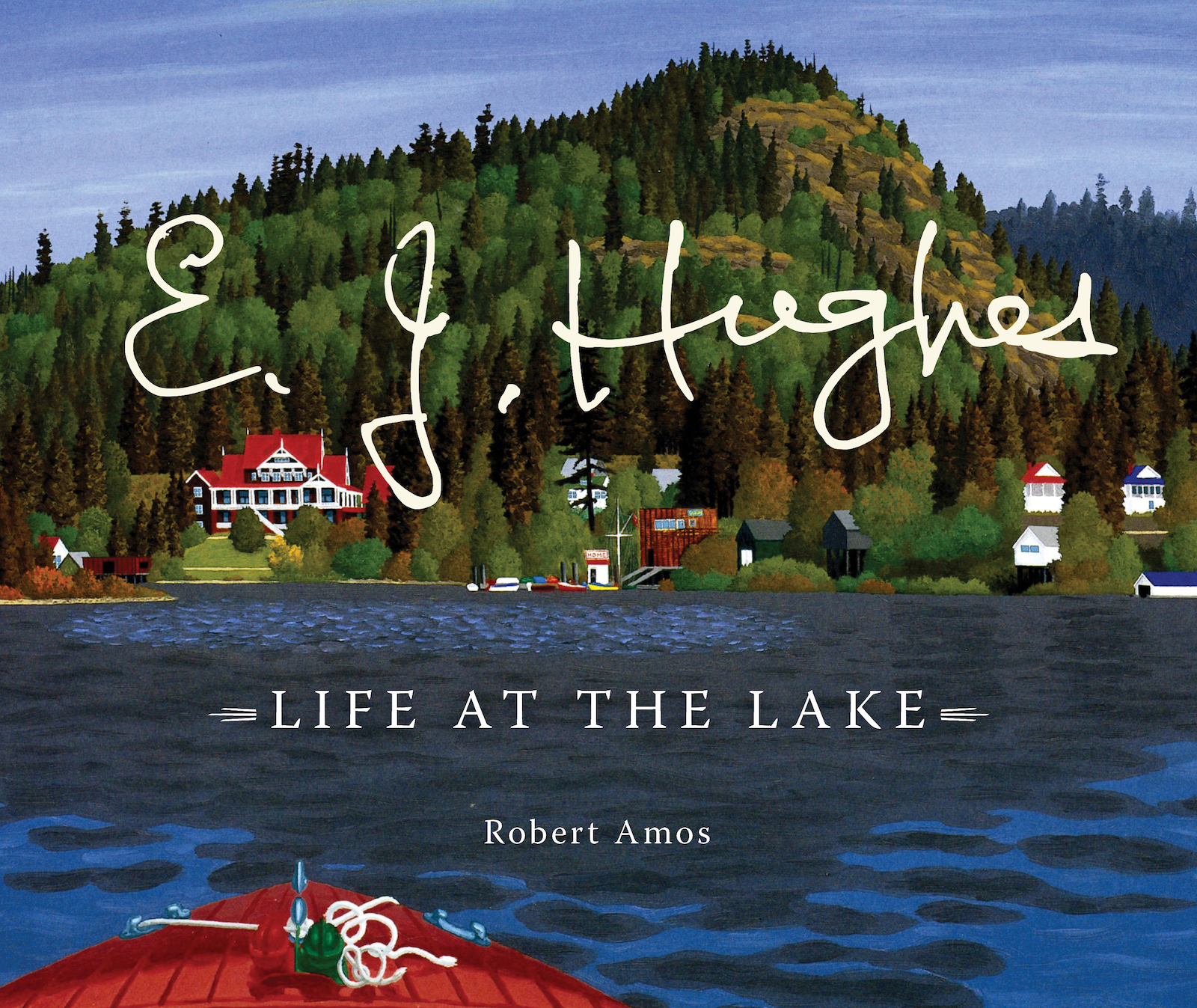E. J. Hughes’ official biographer has produced a fourth volume about the prolific painter, examining daily life for Edward and his wife, Fern, during the years they spent living in a quiet spot on Vancouver Island’s Shawnigan Lake. Filled with sketches, notes, letters, newspaper clippings, and reproductions of paintings, E. J. Hughes: Life at the Lake by Robert Amos offers a fascinating glimpse into the everyday life of a beloved Canadian artist.
In May of 1955, some visitors dropped in on Ed and Fern at their Shawnigan Lake home. An art collector from West Vancouver, Mrs. Doreen M. Norton, had seen Hughes’s paintings in Montreal. With her son, she came to pay her respects, and they drove the artist to view some of his nearby sketching spots. This kindness was especially welcome because, at the time, Hughes didn’t own a car.
Mrs. Norton then offered to sponsor Hughes to make his first visit to the Interior of British Columbia, an area she knew well. He left in May 1956, travelling alone because the two hundred dollars provided by Mrs. Norton was not enough to allow Fern to go with him.
Pat Salmon described his trip: “He travelled to the Okanagan Valley by train. Mrs. Norton had offered Hughes the use of her station wagon which she offered to leave at the Vancouver Airport, but he couldn’t drive. Hughes got off the train at Ashcroft, noted the scenery, and got a bus to Vernon, looking for sketching spots on the way. He made some sketches at Vernon and nearby Kalamalka Lake.
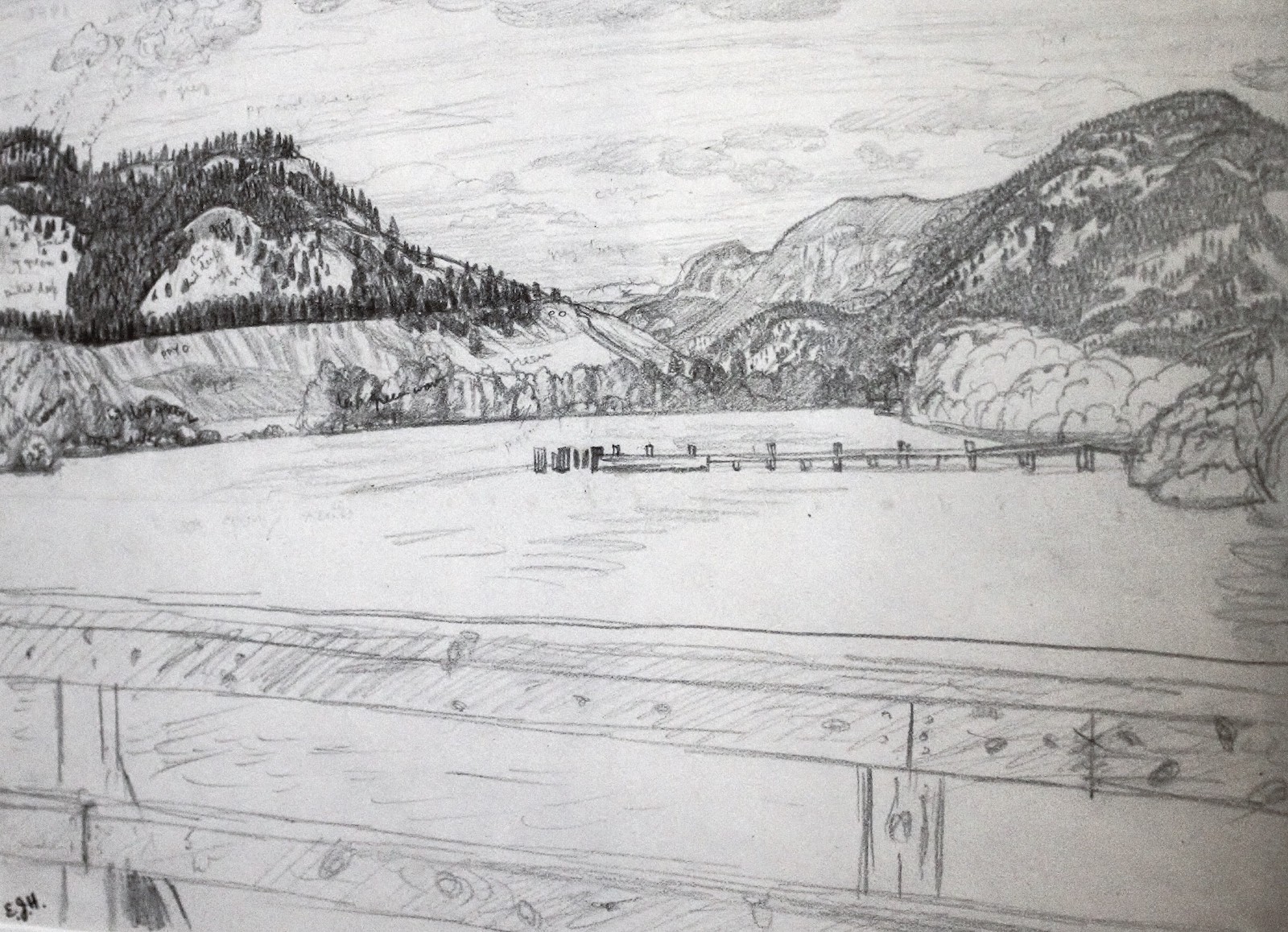
“Hughes experienced cool, unseasonable weather on the trip. After that he went by bus to Chase on the Thompson River just where it drains out of Little Shuswap Lake. He spent a few days in the Kamloops region getting at least one sketch. Hughes ran out of money in Kamloops and though he had a train ticket to Vancouver and a boat ticket to Victoria and a bus ticket to Shawnigan, he had no money for food. He reached Vancouver and went to his sister Irma’s Point Grey house for the night” (Pat Salmon, The Vast and Beautiful Interior, Kamloops Art Gallery, 1994).
On his two-and-a-half-week trip, the artist realized only thirteen pencil sketches, just a third of what he had anticipated.
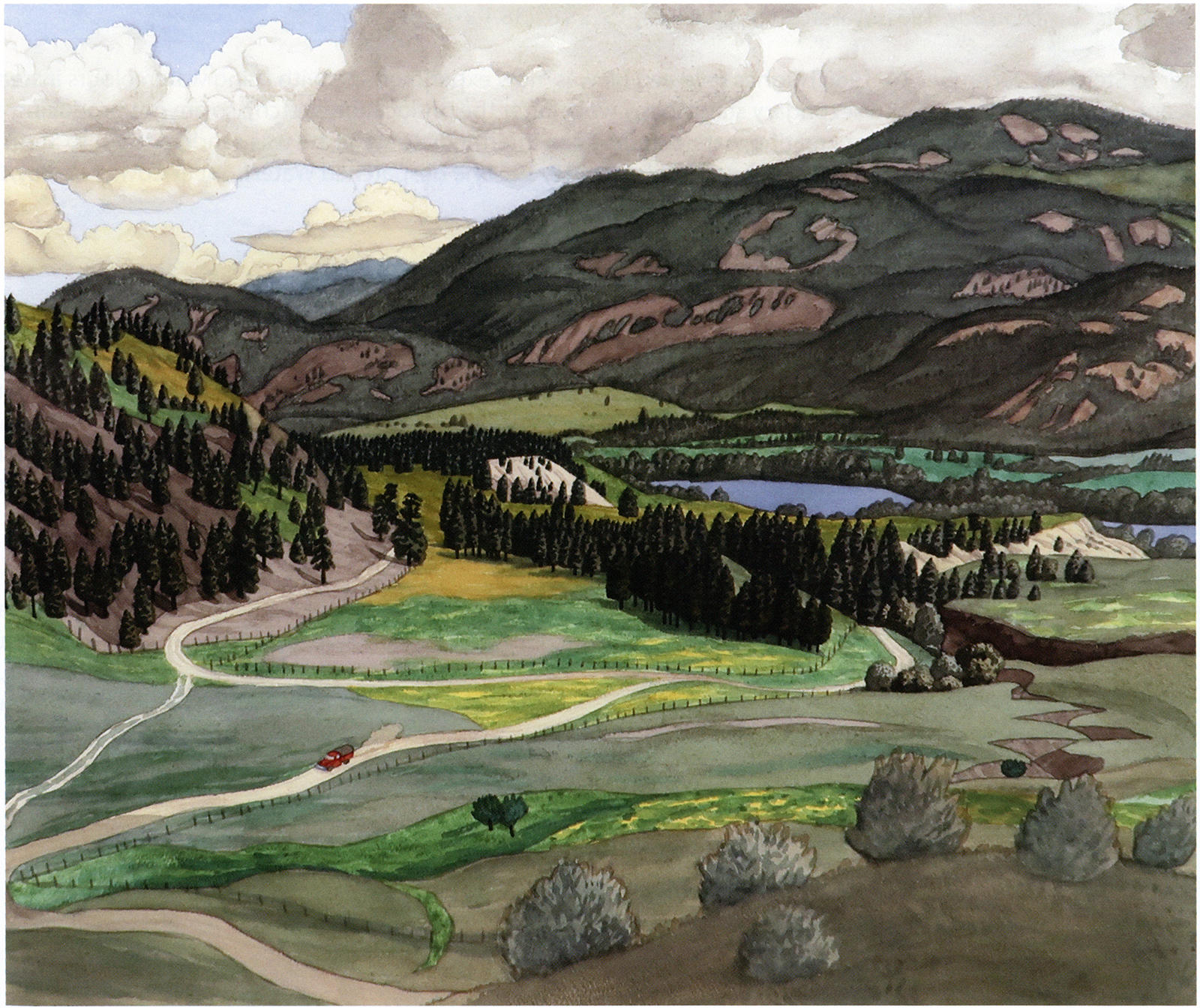
Back in his Shawnigan studio, Hughes wrote to thank Doreen Norton:
“The scenery was wonderful and I hope to return there some day to sketch. Especially around Pritchard, over which area you seemed very enthusiastic . . . Would like to say once again that I can understand your enthusiasm in the country up there. The views were really magnificent” (E. J. Hughes to Doreen Norton, July 4, 1956).
After those rare and rather brief trips, Hughes brought home his drawings and continued working diligently in his studio at Shawnigan Lake. It was three years after the cross-Canada venture, in 1959, that he announced to Stern “am leaving next week for two weeks on West Coast of Vancouver Island, to sketch the rocks, beaches and breakers of the Pacific coast, also the islands with their characteristic wind-blown trees” (E. J. Hughes to Max Stern, April 21, 1959).
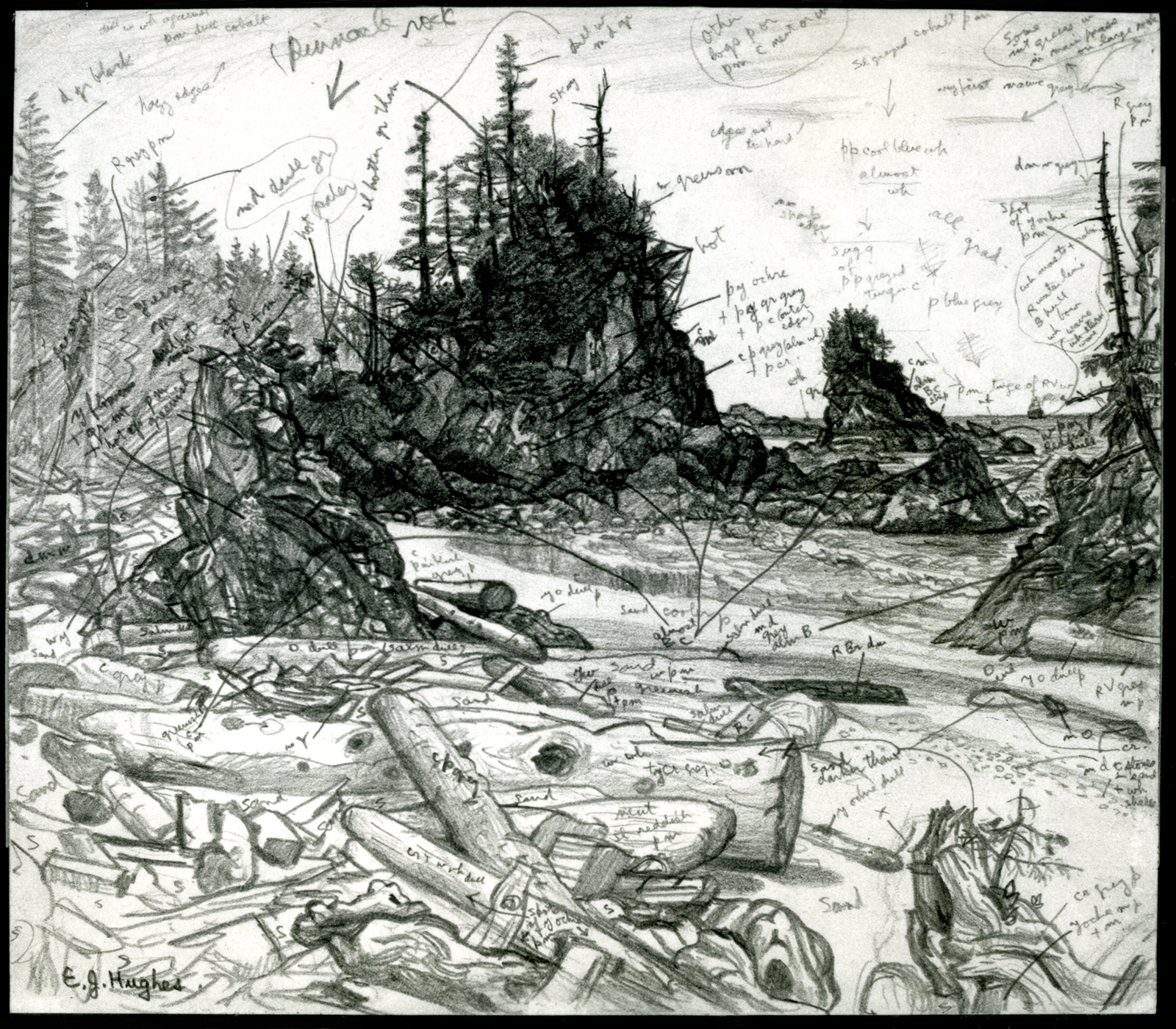
This was the only time the artist worked on the island’s west coast. On his return, he wrote again to the Dominion Gallery: “Did I tell you I took the 2 weeks trip to Bamfield on the west coast of Vancouver Island in May? It was the last trip of the [Canada Council] fellowship and I obtained some sketches (pencil) of the rugged rocky terrain and the Pacific breakers, a type of scenery we don’t get on the east coast of the Island” (E. J. Hughes to Max Stern, August 4, 1959).
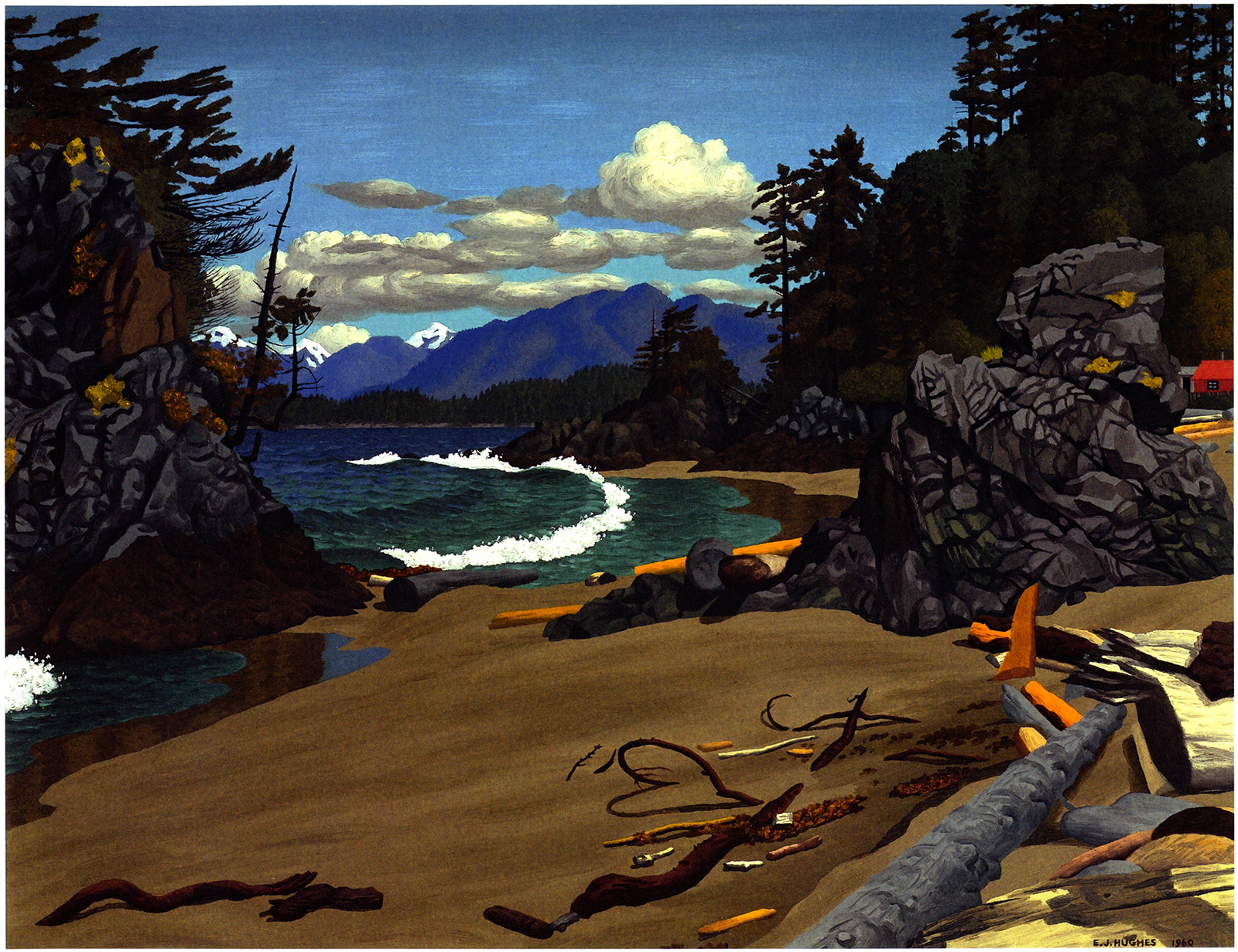
On the frame label which he wrote out for the painting titled The Pacific Coast, Hughes described his visit this way: “In 1959 when I made the pencil sketch from Nature for this painting of Brady’s Beach, near the village of Bamfield on the west coast of Vancouver Island, there was no road from the east coast of the island to Bamfield and I had to go by ferry boat from the city of Port Alberni at the head of Barkley Sound and Alberni Canal, a long boat trip . . . The sketch was made in May, when the west wind was almost continuous, as can be seen from the tree shapes. In the background is the entrance to Barkley Sound” (E. J. Hughes frame label, April 1974).
Pat Salmon later commented: “All I know is he was freezing to death while he sketched there” (interview with the author, December 9, 2014).
Text by Robert Amos from E. J. Hughes: Life at the Lake, text copyright © 2023 by Robert Amos. Reprinted with permission of TouchWood Editions. Photos courtesy of the estate of E. J. Hughes. Read more stories about the arts.

